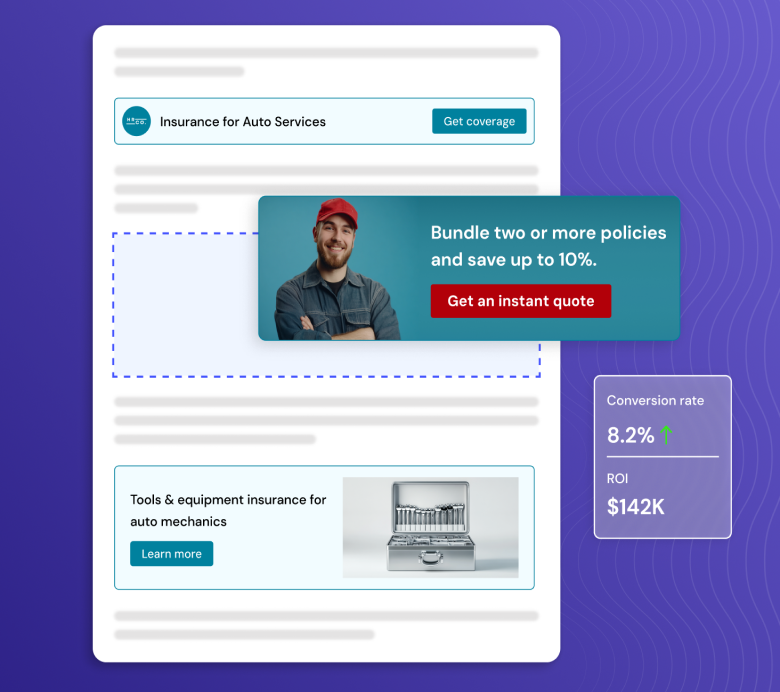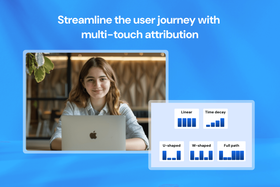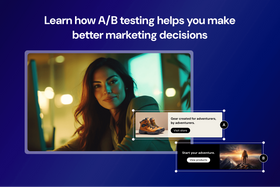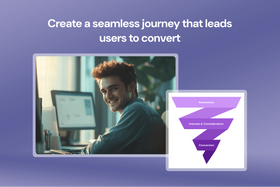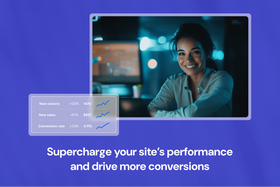13 CRO best practices to turn traffic into sales in 2026
Discover the secrets to CRO success with tips and strategies to increase conversion rates and maximize ROI.
Updated March 27, 2025
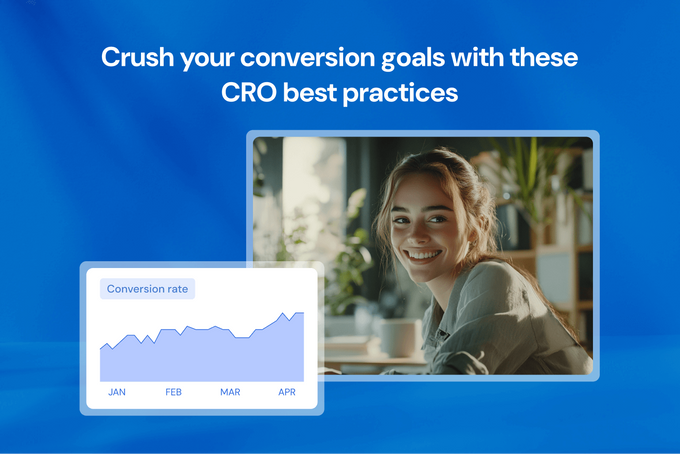
You've got the traffic, but your visitors just aren't converting—and it's frustrating. That's where conversion rate optimization (CRO) comes in. CRO helps you pinpoint exactly what's stopping your visitors from taking action so you can make strategic changes that drive results without wasting time on guesswork.
But what steps can you take to make the biggest impact? In this article, I'll walk you through the best practices for improving your conversion rate and turning your traffic into revenue.
Key takeaways
- The key to CRO is focusing on learning—if you can learn, you can improve conversion rates.
- Every CRO activity is an experiment; the only failure is failing to learn.
- Measure everything, but only analyze the data that's highly relevant to what you're doing.
- Remember that your instinct is just as valuable as the data you collect, so listen to both.
What is conversion rate optimization?
CRO is the process of improving a website to encourage more visitors to take a desired action, such as making a purchase, downloading a guide, or filling out a form. It involves analyzing user behavior, identifying barriers to conversion, and conducting A/B tests to improve performance.
A well-executed CRO strategy helps you maximize the value of your existing traffic. This leads to better ROI, increases revenue per visitor, reduces customer acquisition costs, and provides insights into how visitors interact with your site, helping you create a better user experience and streamline your sales funnel.
» Discover proven conversion strategies to maximize ROI.
13 CRO best practices for 2026
1. Define the user journey on your site
Users often need to be exposed to your brand multiple times across different touchpoints before they convert. So, you need to define your conversion funnel or the user journey you're aiming for. Should users click on your social media ad, sign up for a free trial on your website, and upgrade to a paid subscription? Or should they find you via organic search and purchase your product?
Map out the journey you want users to follow and make sure it aligns with their needs and your campaign. Every element should work together seamlessly to support this journey.
» Learn how to optimize user journeys to improve conversions.
2. Segment your traffic
Your optimization strategies will depend heavily on your traffic, so you need to segment it. The more specific you can be, the better results you'll achieve.
To segment your traffic, start by understanding the sources or channels your traffic comes from—social media, email, paid campaigns, etc. Then, categorize the visitors within those channels based on key characteristics such as demographics, behaviors, or needs. For example, an online therapy business might target teens, married couples, or people with certain conditions.
» Discover the best ways to drive organic traffic.
3. Define your conversion goals
Be clear about the conversion goals you're focusing on because there are typically more than one. For example, a single website might want to increase email sign-ups, app downloads, demo bookings, and sales. Identify whether you're targeting a single goal or several, and then quantify and prioritize them. Establishing these goals lays the groundwork for any conversion strategy.
4. Break conversions down into their main parts
Although conversion is one process, it's helpful to divide it into a few main parts. For example, this is how we break it down at Entail:
- Paid campaign performance: Number of views, clicks, and cost per click
- Landing page conversions: How many visitors reach the page and what they click on (i.e., did they start a trial or book a demo?)
- Sign-up flow: How many users provide their details and create an account
- Activation: How users use the product and whether they upgrade
Of course, this will look different for your business. But the point is that you need to measure conversions from start to finish. And because this can be very difficult, you need to break it down into the fundamental parts and analyze each one separately. At the same time, you also have to measure the entire flow as a whole to ensure all parts work well together.
» Easily track and measure conversions with Entail CRO.
5. Account for touchpoints that are difficult to measure
Remember that conversions often require multiple touchpoints before a user takes action, especially for more expensive products or services. Think about your own path to conversion—whether you purchase shoes, a car, or a laptop, you've likely encountered the brand several times before deciding to buy.
While you can easily measure some touchpoints, others are harder to attribute directly—like a pitchside ad during a football match, for example—but they still build trust and influence the purchase decision. Keep this in mind when analyzing conversions and explore ways to quantify and account for these touchpoints.
6. Treat every CRO activity like an experiment
In my experience, the key to effective CRO is defining everything you do as an experiment. The goal of an experiment isn't success but learning what works and what doesn't. By focusing on learning, you'll feel more comfortable testing new ideas, even those with uncertain outcomes.
With that in mind, don't limit yourself to obvious or mainstream strategies—test ideas that might seem unconventional or unlikely to work. These "crazy" experiments often lead to insights you wouldn't have discovered otherwise.
READ MORE: What is CRO testing? (+ how to do it right in 2026)
7. Listen to the data and your gut
While data is crucial for CRO, don't rely on it alone—trust your instincts, too. Of course, you should trust clear and specific data, but data can sometimes be incomplete, skewed, or fail to capture the full picture. If you have experience and a deep understanding of a certain aspect of CRO, your intuition can often guide you to insights the data might miss. So, in order to succeed, you should rely on both data and your gut feeling
» Talk to a CRO expert for tailored one-on-one guidance.
8. Get feedback from users
Talk to your users and gather their feedback to get insights that data alone can't provide. This can reveal their priorities, preferences, and sentiments—what they love, what they dislike, and what truly matters to them. It helps you understand user behavior on a deeper level and find opportunities for improvement that might not be obvious from the data.
» Track every step of the user journey with multi-touch attribution.
9. Prioritize measurement
Measurement is the foundation of effective CRO. Without accurate data, you can't make informed decisions. Marketers always say, "If you can't measure it, don't build it." So, when you build your CRO experiments, measurement should always take precedence.
Set up proper tracking—like adding UTMs or defining event properties—to ensure you can measure every experiment or initiative. If your measurement isn't accurate, the data you collect will be flawed, and you won't be able to optimize effectively.
» Discover which conversion metrics you should track in 2026.
10. Have very short learning cycles
When it comes to CRO, your mantra should be "build, measure, learn." You need to build something, measure if it works, and learn from the results. The smaller this cycle is, the faster you'll find what works. So, try to find quick, cost-effective ways to do the minimum necessary to gain the insights you need.
» Optimize user journeys across your website with Entail CRO.
11. Prioritize high-value, low-effort tasks
When optimizing for conversions, focus on quick, low-effort tasks that deliver a lot of value. While longer projects have their place, the most significant improvements often come from testing small, incremental changes. Avoid relying only on large, resource-intensive optimizations, as they tend to be more wasteful.
12. Test one variable at a time
It's usually very difficult to test multiple changes at once. Therefore, it's best to test one variable or only as many changes as you can accurately measure and analyze at a time. This way, you can understand the impact of each change and find what truly works.
» Learn how to track and measure SEO conversions.
13. Measure everything but focus only on relevant data
The last thing you want is to be drowning in data. So, measure everything to ensure you have it available when you need it. However, try to avoid getting overwhelmed by irrelevant information by only analyzing the data that directly impacts your decisions. This way, you can keep learning new things from past campaigns instead of having to run new ones.
» Track, test, and optimize at scale with Entail CRO. Start free.
Build, measure, learn
The true goal of CRO isn't just increasing conversions—it's learning. Each experiment should be designed to teach you what works best for your business. By focusing on learning, you build a foundation for smarter, more effective decisions that lead to higher conversion rates. Keep learning, keep testing, and let your discoveries guide you toward sustainable growth.
» Book a demo to see Entail CRO in action, or try it for free.
